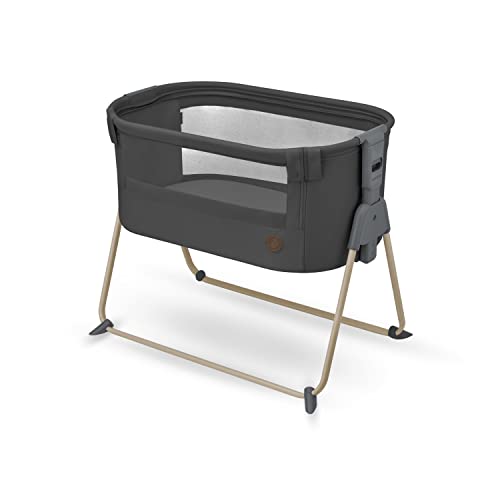What NOT To Do In The Baby Cots Industry
The Essential Guide to Baby Cots in the UK
Picking the best cot for a newborn can be an overwhelming task for new parents. With numerous options readily available in the UK market, understanding the features, security requirements, and kinds of baby cots is vital. This post aims to offer an informative summary of the different baby cots readily available, their benefits, and considerations for parents in the UK.
Kinds Of Baby Cots
There are a number of types of baby cots readily available in the UK, each designed to fulfill various needs and choices. The most typical types consist of:
Standard Cots: These are conventional baby cots that provide a safe sleeping environment for babies and babies. They typically include adjustable mattress heights to match the baby's growth.
Convertible Cots: Also called 3-in-1 or 4-in-1 cots, these versatile alternatives can change from a cot to a young child bed and even into a full-size bed. They are created for extended use, making them a cost-efficient choice.
Moses Baskets: Ideal for the early months, Moses baskets are light-weight and portable, making them simple to move the home. They generally feature a detachable cover and a soft mattress.
Travel Cots: These cots are collapsible and compact, specifically designed for parents on the go. They come with a luggage for easy transport and are perfect for pajama parties or holiday trips.
Co-Sleepers: These cots are created to connect to the parent's bed, enabling simple access to the baby throughout the night while guaranteeing the youngster has their own safe sleeping space.
Table 1: Comparison of Baby Cot Types
Kind of Cot
Age Range
Mobility
Durability
Rate Range
Standard Cot
Birth to 2 years
Low
Moderate
₤ 120 – ₤ 300
Convertible Cot
Birth to 5+ years
Moderate
High
₤ 150 – ₤ 500
Moses Basket
Birth to 6 months
High
Low
₤ 40 – ₤ 150
Travel Cot
Birth to 3 years
Very High
Low
₤ 50 – ₤ 200
Co-Sleeper
Birth to 6 months
Moderate
Low
₤ 100 – ₤ 300
Safety Standards for Baby Cots in the UK
Guaranteeing the safety of a baby cot is critical. In the UK, all cots must adhere to specific guidelines to ensure they are safe for use. The following requirements must be satisfied:
British Standard BS EN 716: This standard sets requirements for the security and performance of children's cots and folding cots.
Material Safety: The cot needs to be made from non-toxic products that are complimentary from harmful chemicals.
No Sharp Edges: Ensure there are no sharp edges or extending points that could damage the baby.
Steady Structure: The cot needs to have a steady base to prevent tipping, and the slats need to be spaced properly to prevent the baby's head from getting trapped.
Mattress Fit: The mattress ought to fit snugly in the cot, with no gaps that might position a suffocation danger.
Features to Consider When Choosing a Baby Cot
When selecting a baby cot, parents need to keep the following features in mind:
Adjustable Mattress Heights: Cots with adjustable heights make it easier to put and lift the baby as they grow.
Product Quality: Look for sustainably sourced wood or products that are both durable and safe for infants.
Alleviate of Assembly: Cots that are simple to put together and disassemble can conserve moms and dads time and disappointment.
Storage Options: Some cots feature integrated storage drawers to keep baby basics organized.
Style and Aesthetic: Choose a cot style that fits well with the home decor while ensuring it is functional and safe.
Frequently Asked Questions About Baby Cots in the UK
Q1: How much should I expect to invest in a baby cot?
A1: Prices for baby cots in the UK can differ extensively based upon type and brand name, varying from ₤ 40 for a standard Moses basket to over ₤ 500 for high-end convertible cots.
Q2: When can my baby move to a cot from a crib?
A2: Most babies transition to a cot in between 6 months and 2 years, depending on their size and movement. It's crucial to monitor their developmental turning points.
Q3: Are pre-owned cots safe to utilize?
A3: While second-hand cots can be safe, guarantee they meet current security requirements and reveal no signs of wear, damage, or remembers. It's suggested to avoid older designs that might not comply with present regulations.
Q4: Can I use a cot for a co-sleeping arrangement?
A4: Co-sleeper cots are developed specifically for this function, permitting you to keep your baby close while maintaining a safe sleeping environment. Always adhere to co-sleeping safety suggestions.
Q5: What is the very best mattress type for a baby cot?
A5: A company and flat mattress is suggested for infants. Prevent soft bed mattress, as they increase the danger of suffocation. Ensure it fits snugly in the cot without any spaces.
Selecting the best baby cot is a critical choice for new moms and dads in the UK. Best Cot Beds needs careful factor to consider of security guidelines, kinds of cots readily available, and features that deal with their specific requirements. By being educated, moms and dads can produce a safe and comfy sleeping environment for their newborns, making sure assurance during those vital early months. Ultimately, investing time in research study can lead to a notified choice that balances safety, convenience, and functionality.
